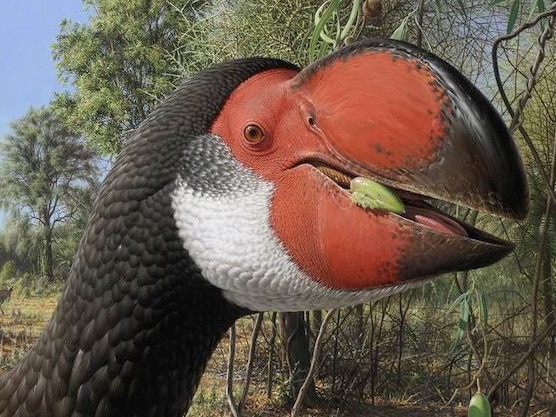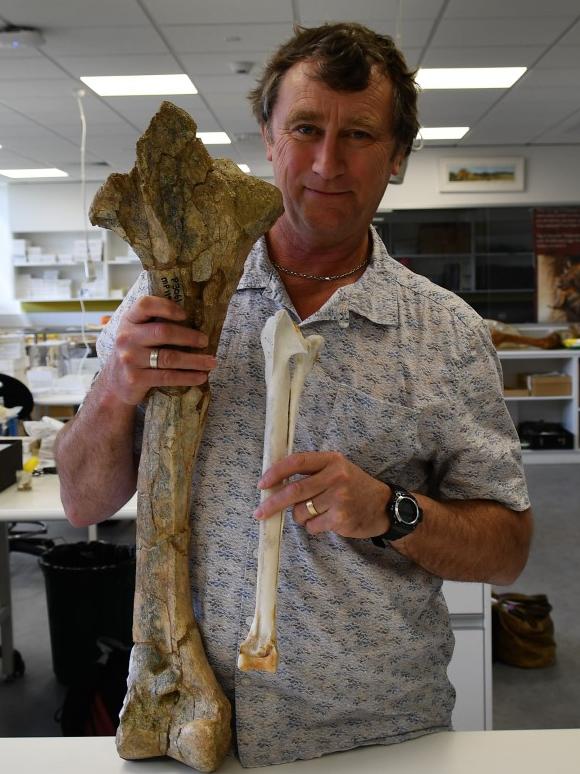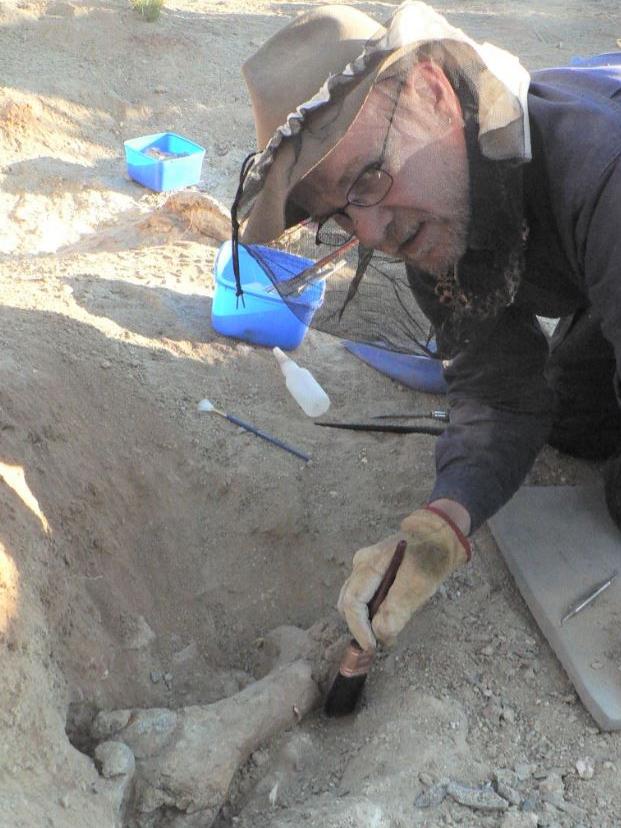Flinders research uncovers clues on ‘thunder birds’ fate
A simple fact of life eventually caught up with the mighty creature that once roamed SA’s landscape, Flinders researchers say.
Tertiary
Don't miss out on the headlines from Tertiary. Followed categories will be added to My News.
They were among the largest birds to ever walk the earth, some standing up to 3m tall and weighing more than half a tonne, but in the end a changing climate spelled extinction for our magnificent “thunder birds”.
Also commonly called “demon ducks”, or dromornthids to experts, the birds can be found in the fossil records of the northern Flinders Ranges and an area near Alice Springs, and it’s these fossils that are now revealing an incredible story for scientists from Flinders University and the University of Cape Town.
Studies of the microstructure of the birds’ fossil bones by palaeontologists from the two unis have revealed that while the size and the breeding cycles of the birds gradually changed over the millennia they ultimately couldn’t keep pace with the environmental changes around them.
Basically, they couldn’t make enough baby thunder birds.

“Sadly for these amazing animals, which already faced rising challenges of climate change as the interior of Australia became hotter and dryer, their breeding biology and size couldn’t match the more rapid breeding cycle of modern day smaller emus to keep pace with these more demanding environmental conditions,” says UCT Professor Anusuya Chinsamy-Turan said.
“Questions, such as how long these gigantic birds took to reach adult size and sexual maturity, are key to understand their evolutionary success and their ultimate failure to survive alongside humans. We studied thin sections of the fossilised bones of these thunder birds under the microscope so that we could identify the biological signals recorded within. The microscopic structure of their bones gives us information about how long they took to reach adult size, when they reached sexual maturity, and we can even tell when the females were ovulating.”
The study, published in The Anatomical Record, indicates Dromornis stirtoni – the largest dromornthid and probably the biggest bird that’s ever lived, roaming the earth seven million years ago – took a long time to grow to full body size and probably didn’t become sexually mature until it was 15 years old.


By the time of the last dromornthids (also known by the indigenous name of mihirung) – Genyornis newtoni – the birds had downsized, although they still weighed around six times more than an emu.
Although the bones of these late Pleistocene birds show their reproductive biology had responded to ever-changing climate pressures, and that they were breeding sooner than their ancestors did, the strategy did not approach the reproductive efficiency shown by large ratite birds like emus today.
“In fact, they persisted together through several major environmental and climatic perturbations,” study co-author Flinders University Associate Professor Trevor Worthy said.
“However, while Genyornis was better adapted than its ancestors, and survived through two million years of the Pleistocene when arid and drought conditions were the norm, it was still a slow-growing and slow-breeding bird compared to the emu.
The differing breeding strategies displayed by emus and dromornithids gave the emu a key advantage when the paths of these birds crossed with humans about 50 thousand years ago, with the last of the dromornithids goings extinct about 40 thousand years ago. In the end, the mihirungs lost the evolutionary race, and an entire order of birds was lost from Australia, and the world.”





